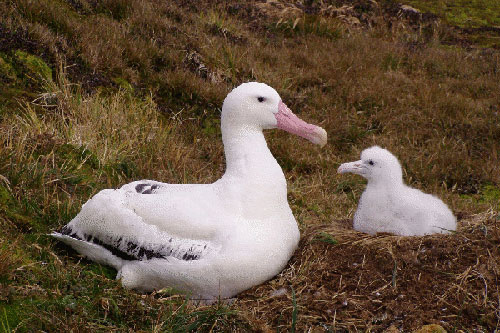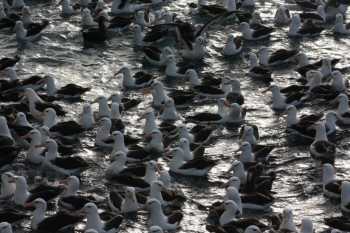The Kauaʻi Endangered Seabird Recovery Project (KESRP) is a Hawaiian Division of Forestry and Wildlife project, administered through the Pacific Studies Co-operative Unit of the University of Hawaiʻi. Formed in 2006, the project focuses primarily on three threatened seabirds that breed on the island of Kauaʻi – Newell’s Shearwater Puffinus newelli, Hawaiian Petrel Pterodroma sandwichensis and Band-rumped Storm Petrel Oceanodroma castro.
KESRP has recently reported on its work placing cameras at seabird burrows on Kaua‘i and filming feral Domestic Cats Felis catus entering burrows, in two separate cases killing a Newell’s Shearwater and a Hawaiian Petrel (click here).
“In one of the videos, a cat enters a rare Newell’s Shearwater burrow at a site within the Hono o Na Pali Natural Area Reserve. It is then seen struggling about in the burrow and then emerging with the shearwater in its mouth before killing it and eating parts of it off camera. The remains of the bird were recovered a few days later by KESRP staff. The bird was one of a pair of the very rare Newell’s Shearwaters that had successfully fledged a chick last year.”
“The cameras are showing that cats are regularly visiting seabird burrows. Last year, we had one cat visit nine burrows in a single day – killing a Hawaiian Petrel chick in the process. If one considers that we are only monitoring a small number of burrows with cameras in a small number of areas, then the true impact of feral cats must be very significant indeed. These cats are not house pets. They are predators capable of wiping out entire colonies of our native and endemic seabirds.”
“This season, KESRP has already recorded 25 instances on camera of feral cats trying to enter breeding bird burrows, including the two that resulted in the birds inside being killed. The remains of nine endangered seabirds killed by cats have also been discovered at multiple remote sites around the island so far this season.”

Newell's Shearwater photograph by Eic Vanderwerf
Read more in news accounts in the Star Advertiser and the Garden Isle.
John Cooper, ACAP Information Officer, 06 July 2014

 English
English  Français
Français  Español
Español 


